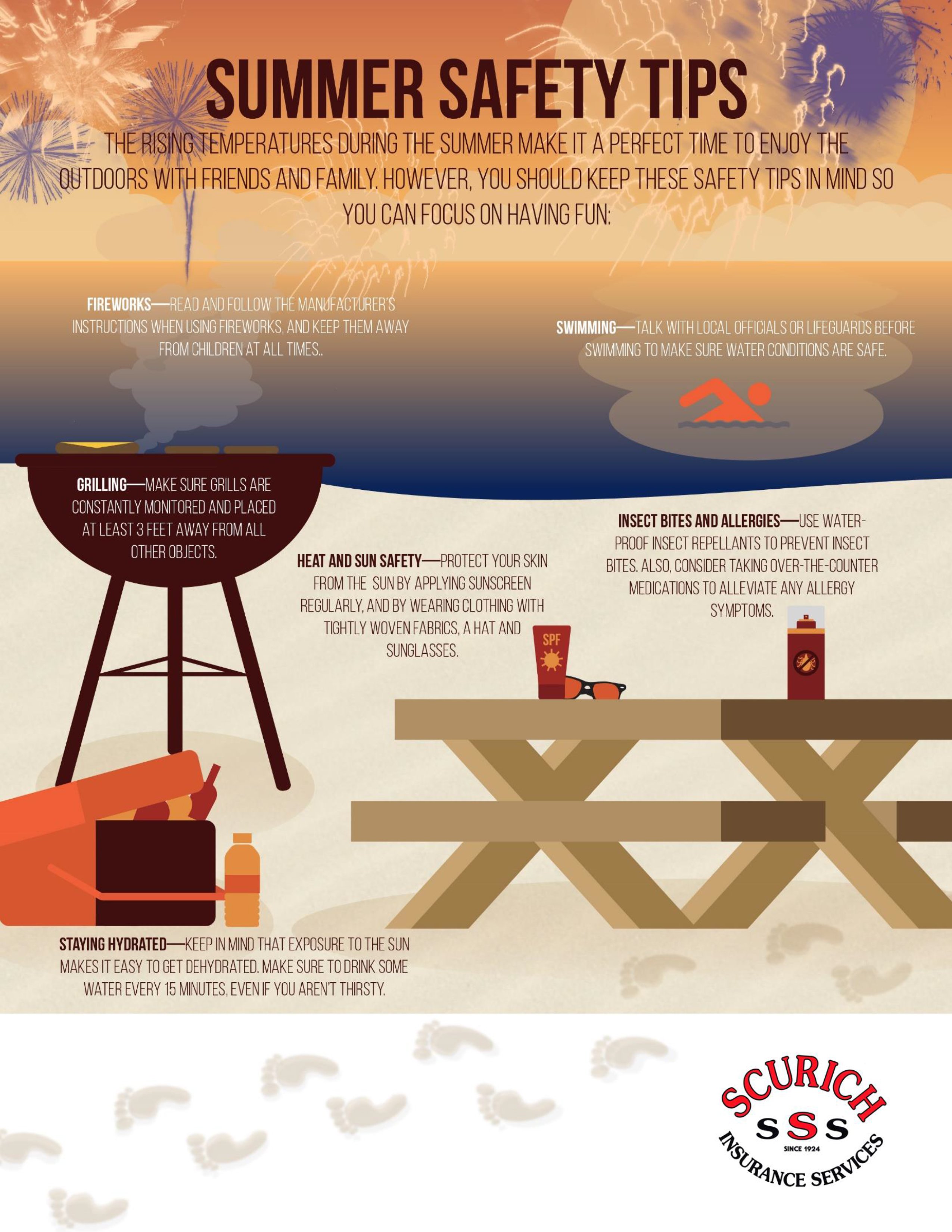Now Accepting Online Payments!
|
|||||||||
|
|||||||||

Severe weather causes thousands of injuries and hundreds of deaths each year in the United States. Stay safe this summer by taking the following precautions:
“Weather Radio All Hazards” receiver unit with a warning alarm tone and battery.
On June 16, 2017, President Donald Trump signed a presidential directive rolling back parts of former President Barack Obama’s efforts to improve the United States’ trade relationship with Cuba. Farmers saw the directive as a step backward, as it is expected to tighten restrictions on exports and complicate agricultural trade.
Shipments of U.S. grain and soy to Cuba have soared between 2016 and 2017, thanks to Obama’s 2014 diplomatic breakthrough. Within the first four months of 2017, the United States shipped 142,860 tons of grain and soy to Cuba, up from 49,090 tons during the same period of 2016. Although U.S. farmers have just gotten a taste of the profitability from exporting to Cuba, Trump’s move breakthrough is expected to cost U.S. farmers $125 million per year.
President of the U.S. Grains Council Tom Sleight said in a recent statement that, “Trump’s move could cut off near-term sales and stymie economic development that would drive longer-term demand growth.” Although the amount of exports to Cuba are small in comparison to total U.S. exports—corn exports were close to 56 million tons last year—every bit helps as farmers face a decline in farm income for the fourth consecutive year.
Indoor agricultural startup Bowery has raised $20 million in Series A funding to build more farms, plant more crops and hire more people. The urban farming startup is one of many that intend to reimagine farming by growing produce vertically in warehouses across the country, as opposed to planting crops in sprawling fields that are reliant upon good weather.
Co-founder Irving Fain stated that since vertical farms can be built in any city, produce would be more accessible to customers and reach them more quickly.
According to Research and Markets, the vertical farm market is expected to grow to $5.8 billion by 2022.

The Affordable Care Act (ACA) requires applicable large employers (ALEs) to offer affordable, minimum value health coverage to their full-time employees in order to avoid possible penalties. Because this employer mandate has been criticized as burdensome for employers and an impediment to business growth, it seems likely that its repeal will be part of any Republican plan to repeal and replace the ACA.
If the employer mandate is repealed, many ALEs will likely want to modify their plan designs to go back to pre-ACA eligibility rules (for example, requiring employees to have a 40-hour per week work schedule to be eligible for benefits). Employers may also consider increasing the amount that employees are required to contribute for group health plan coverage.
When making plan design changes, employers should review their compliance obligations under the Employee Retirement Income Security Act (ERISA) and the ACA mandates that may remain intact
LINKS AND RESOURCES
|
Under the ACA’s employer mandate provisions, ALEs that do not offer affordable, minimum value health coverage to their full-time employees may be subject to penalties if any full-time employee receives a subsidy for health coverage through an Exchange.
These employer mandate provisions, which are also known as the “employer shared responsibility” or “pay or play” rules, only apply to ALEs, which are employers with, on average, at least 50 full-time employees, including full-time equivalent employees (FTEs), during the preceding calendar year.
| The employer mandate rules took effect for most ALEs beginning on Jan. 1, 2015. However, medium-sized ALEs (those with fewer than 100 full-time and FTE employees in 2014) generally had an additional year, until 2016, to comply with the employer mandate rules, if they satisfied specific criteria to qualify for this delay. |
For purposes of the ACA’s employer mandate, a full-time employee means an employee who works an average of 30 or more hours per week.
The Internal Revenue Service (IRS) provided ALEs with two methods to determine whether employees are full time under the employer shared responsibility rules—the monthly measurement method and the look-back measurement method.
| Monthly Measurement Method | Under this method, an employee’s full-time status for a calendar month is determined based on hours of service for that month. |
| Look-back Measurement Method | The look-back measurement method involves:
If an employee had, on average, at least 30 hours of service per week during the measurement period, the ALE must treat the employee as a full-time employee for the stability period. This rule applies regardless of the employee’s number of hours of service during the stability period, as long as he or she remains an employee, unless a special rule applies. |
To comply with the ACA’s employer mandate, many ALEs were required to expand their health plan’s eligibility criteria to include employees who work 30 or more hours per week. ALEs that use the look-back measurement method have also implemented complex systems for tracking and measuring employee hours in order to identify the employees who must be offered coverage.
In addition, to satisfy the ACA’s affordability requirement (9.5 percent, as adjusted from year-to-year), ALEs have analyzed their employees’ premium contribution rates and made adjustments when necessary.
At this time, the ACA, including its employer mandate rules, remains intact as a federal law. Proposed legislation to repeal and replace the ACA is currently making its way through the federal legislative process. The current bill that is being considered by Congress, which is referred to as the American Health Care Act (AHCA), would reduce the penalties for failing to comply with the ACA’s employer mandate to zero beginning in 2016. This change would effectively repeal the ACA’s employer mandate (although it would technically still exist).
| ACA Reporting: The AHCA would not repeal the ACA’s employer reporting requirements under Internal Revenue Code (Code) Sections 6055 and 6056. Under these tax provisions, ALEs are required to report on full-time employee offers of coverage and employers with self-insured health plans must report on minimum essential coverage. Under the AHCA, employers would still be obligated to report and subject to penalties for failing to report until the proposed AHCA tax credit system is effective in 2020. Starting in 2020, employers would report offers of coverage on employees’ Forms W-2. |
The AHCA’s future is still uncertain. The bill has been amended several times and will likely be subject to additional revisions in the near future. Since the bill has not been signed into law, the ACA’s employer mandate, and its penalty provisions, remain intact. However, because the employer mandate has been criticized as burdensome for employers and an impediment to business growth, it seems likely that its repeal will be part of any Republican plan to repeal and replace the ACA.
If the ACA’s employer mandate is repealed, ALEs will no longer be required to provide affordable, minimum value coverage to their full-time employees in order to avoid possible penalties. Many ALEs will likely want to modify their plan designs to go back to pre-ACA eligibility rules. Possible modifications that ALEs may consider include:
| Effective Date of AHCA Repeal: The AHCA would effectively nullify the employer mandate by eliminating potential penalties effective Jan. 1, 2016. Because the employer mandate took effect for some employers in 2015, penalties could technically still apply for the 2015 calendar year, although it is unclear whether the IRS would pursue these penalties under the Trump administration. Also, an audit report released by Treasury Inspector General for Tax Administration (TIGTA) reveals that, due to system and operational problems, the IRS has been unable to identify the employers that are potentially subject to an employer mandate penalty or to assess any penalties. |
It is difficult to predict whether federal agencies, such as the IRS and DOL, will issue guidance in the event the ACA’s employer mandate is repealed in order to help ALEs work through the changes. Even if federal agencies plan on issuing implementation guidance, it may take a while before it is available. In the meantime, ALEs will likely want to make changes to their health plans. In general, ALEs that are considering changes to their health plan’s design and administration should consider their compliance obligations under ERISA and the ACA mandates that may remain intact.
Making Plan Changes
In general, under ERISA, employers may amend, or make changes to, their health plans at any time, provided those changes do not violate other federal laws. An employer’s decisions about plan design, including who is eligible for coverage, are generally viewed as “settlor” functions that are not subject to ERISA’s rules that require fiduciaries to act solely in the interests of plan participants or beneficiaries. Thus, employers may make decisions about plan design based on their business interests, even if those decisions negatively impact plan participants or beneficiaries.
Although most employers implement plan design changes at the start of the plan year, an employer may change the terms of its health plan during the plan year. Employers with insured plans should review their insurance documents and consult with their carriers, if necessary, before making mid-year plan design changes. The following are two types of mid-plan year design changes that an ALE may consider making if the employer mandate is repealed:
Change the plan’s eligibility rules to raise the number of hours needed to be a full-time employee who is eligible for plan coverage. Changing the plan’s eligibility rules is not a “qualifying event” for COBRA purposes, so individuals who would lose coverage because they are no longer eligible are not entitled to elect federal COBRA continuation coverage. These individuals would, however, be eligible for a special enrollment period under an ACA Exchange or another employer’s group health plan.
Increase the amount that employees are required to pay for coverage. If employees pay their health insurance premiums on a pre-tax basis, the Code Section 125 rules limit when they can change their elections during the plan year. Certain mid-year changes are permissible (for example, automatic increases or decreases to employees’ contributions for insignificant cost changes). Also, if the cost increases significantly during a plan year, the plan may allow participants to make an election change, including dropping coverage in certain situations.
| Compliance Concern—Vested Benefits: Unlike retirement plan benefits, welfare benefits (for example, group health plans) are not subject to ERISA’s vesting requirements. Because welfare benefits are not vested under ERISA, they can be amended or changed at any time, as a general rule. However, there are some circumstances when group health plan benefits may vest under the terms of the plan documents. The case law on this issue generally provides that, once a participant satisfies all of the plan’s conditions for receiving a benefit, those benefits cannot be reduced or eliminated for that participant. The application of this rule depends on the specific facts of each situation, including the terms of the plan document. Employers that are making changes to their eligibility rules, particularly mid-year changes, may want to consult with their legal counsel regarding any vested benefit concerns. |
Communicating Changes to Participants
Any changes that are made to plan design must be formally adopted by the plan sponsor as part of the health plan’s documentation. These changes also must be communicated to participants through either an updated summary plan description (SPD) or a summary of material modifications (SMM).
ERISA provides generous deadlines for communicating plan design changes to participants—the deadline is 210 days following the close of the plan year in which the amendment was adopted, except that notice of material reductions in benefits and services generally must be given no later than 60 days after the date of the adoption of the modification. However, to help avoid benefits disputes and possible litigation, employers should communicate changes to their health plans’ eligibility rules as soon as possible, and before the changes take effect, as a best practice.
In addition, federal courts have addressed what information an employer is required to provide to plan participants when it is considering whether to make a plan amendment. These cases often arise in the context of retirement plan benefits, but the same ERISA fiduciary principles would also apply to welfare plan benefits, such as group health plan coverage. In general, most courts have ruled that ERISA plan fiduciaries (that is, plan sponsors) have a duty to provide truthful information about potential plan amendments when participants ask about the possibility of plan changes.
When considering plan design changes, employers should remember that many ACA reforms will likely remain in place even if the employer mandate is repealed, including the following ACA reforms that impact plan eligibility.
| ACA Reform | Description |
| Waiting Period Limits | The ACA prohibits group health plans from applying any waiting period that exceeds 90 days. A “waiting period” is the period of time that must pass before coverage for an employee or dependent who is otherwise eligible to enroll in the plan becomes effective. This waiting period limit does not require an employer to offer coverage to any particular employee or class of employees, including part-time employees. It only prevents an otherwise eligible employee (or dependent) from having to wait more than 90 days before coverage under a group health plan becomes effective. |
| Dependent Coverage to Age 26 | The ACA requires group health plans and health insurance issuers that provide dependent coverage to children on their parents’ plans to make coverage available until the adult child reaches age 26. This provision does not require plans and issuers to offer dependent coverage at all. It only requires plans that otherwise offer dependent coverage to make that coverage available until the adult child reaches age 26. |
| Prohibition on Rescissions | The ACA prohibits group health plans and health insurance issuers from rescinding coverage for covered individuals, except in the case of fraud or intentional misrepresentation of a material fact. A “rescission” is a cancellation or discontinuance of coverage that has a retroactive effect (such as one that treats a policy as void from the time of enrollment). Thus, as a general rule, changes to a health plan’s eligibility rules should be effective on a prospective basis only. |

Ever since the first ride-sharing app debuted in 2011, they’ve experienced exponential growth in usage. In fact, in the cities where such apps have joined the market, taxi ridership has declined anywhere from 10 to 30 percent. However, while the popularity of ride-sharing apps is increasing, so is the host of risks associated with using them. Most of the companies are in the stages of infancy, and the situations they’re facing are in uncharted territory.
While they’re most commonly referred to as ride-sharing apps, any company that uses an online platform to connect passengers with drivers (using the driver’s own vehicle) is called a transportation network company (TNC). These companies each have their own unique differences, but they all operate under the same basic concept.
Through their smartphones, passengers are matched with available drivers via GPS. Most apps display the driver’s route and estimated time of arrival, in addition to the driver’s name, photo and vehicle information. The TNC gets a cut of the fare, typically between 20 to 25 percent, for each ride a driver completes.
The apps are convenient for passengers and for drivers looking to supplement their income. Still, they’re not without flaws. For example, it can be difficult to determine what regulations the TNC and its drivers need to follow, what insurance coverages apply to them and who is considered liable in the event of an accident.
Since TNC drivers use their vehicles for both business and personal purposes, TNCs have to clarify when drivers are covered by different types of insurance.
When a driver is driving with the TNC app off, the driver is not accepting rides, so the driver’s personal auto insurance is the primary coverage. When the driver turns the app on, but has not yet accepted a ride, TNCs generally offer contingent liability coverage if the driver’s personal auto insurance does not offer protection. When a passenger is picked up, the TNC’s policy is the primary policy until the end of the ride.
Unlike taxis, which are regulated by the city and have to follow strict guidelines, TNCs haven’t had to adhere to the same strict regulations. This is beginning to change, as legal concerns have grown. Some states are enacting laws to set standards and insurance requirements for TNCs. Furthermore, cases that are currently in the courts will help shed light on who is to be held liable in ride-sharing accidents in the future.
Some ride-share companies provide liability insurance for their drivers in excess of the driver’s personal liability coverage. However, this does not mean that the driver will always be covered.
Drivers also face the risk of being dropped by their insurance company if they’re found to be misleading them. Drivers need to be honest about what the primary use for the vehicle is when they obtain the policy. If a driver fails to indicate the intention to drive for commercial purposes, the insurer could not only deny claims, but also drop the driver from the policy. Some insurers have created hybrid policies that allow drivers to switch between personal and commercial coverage for that same reason.
When a passenger gets into a car arranged by a TNC, the passenger agrees to a host of terms and conditions by default. If the driver gets into an accident and the passenger is hurt, there is no guarantee that the driver’s insurance company, nor the TNC, will pay for damages. For example, the driver’s personal insurance company may say that he or she was driving for profit and, for that reason, it is not required to pay the medical bills. The passenger would need to take the driver to court for damages, which can be a costly and time-consuming process.
Safety is a concern for both the driver and for the passenger. A driver never knows the type of person about to get into the back seat. Likewise, a passenger only knows how reliable a driver is from what the TNC shares about the driver on its app.
However, no transportation service can guarantee safety, and the same concerns arise for people who take taxis. But if something happens to the passenger in a taxi, he or she may receive monetary compensation without having to go to court.
Using a ride-sharing app is generally a safe and reliable method of transportation. Nonetheless, there are safety risks to consider. If your employees use ride-sharing apps when they travel, make sure they’re aware of the following safety tips:
a driver who claims to be with a TNC and offers you a ride.
While the TNC insurance landscape evolves to meet the safety needs of drivers and passengers, insurance companies are taking different approaches to claims. Consult with Scurich Insurance for information on new and changing regulations and to be sure you and your employees are always covered.

Keeping up with seasonal repairs and upkeep not only shows pride of ownership, but can reduce the risk of costly and preventable home expenses. Prepare your home for the summer with the following considerations:
Summer is the perfect time to brush up on painting projects in your home. While paint can beautify a room, it can also be harmful to your health.
Stay safe while painting this summer with the following tips:
As warmer weather approaches, more people will be using all-terrain vehicles (ATVs) for recreation. While riding an ATV is a fun activity, these vehicles can be extremely dangerous. In fact, every year, there are over 300 ATV-related deaths across the United States.
Here’s how to keep yourself and your family safe while operating an ATV:
Choking occurs when the brain goes without oxygen for more than four minutes, causing brain damage and death, and is the leading cause of death in infants and toddlers.
If you are the parent or guardian of a small child, it is your responsibility to protect your child from danger. Foods such as hot dogs, whole grapes, nuts, raisins, hard candies and popcorn can be potential choking hazards. Other choking hazards include household items such as latex balloons, coins, small toy parts and marbles.
Protect your child from choking with the following tips:
Make sure to also learn the Heimlich maneuver for infants, as the procedures for a choking infant are different from those of an adult. Learn the steps here.

The rising temperatures during the summer make it a perfect time to enjoy the outdoors with friends and family. However, you should keep these safety tips in mind so you can focus on having fun.
Read and follow the manufacturers instructions when using fireworks, and keep them away from children at all times.
Talk with local officials or lifeguards before swimming to make sure water conditions are safe.
Make sure grills are constantly monitored and placed at least 3 feet away from all other objects.
Protect your skin from the sun by applying sunscreen regularly, and by wearing clothing with tightly woven fabrics, a hat and sunglasses.
Use water-proof insect rellants to prevent insect bits. Also, consider taking over-the-counter medications to alleviate any allergy symptoms.
Keep in mind that exposure to the sun makes it easy to get dehydrated. Make sure to drink some water every 15 min, even if you aren’t thirsty.
Scurich Insurance Services
Phone: (831) 661-5697
Fax: (831) 661-5741
Physical:
783 Rio Del Mar Blvd., Suite7,
Aptos, Ca 95003-4700
Mailing:
PO Box 1170
Watsonville, CA 95077-1170
E-mail address:
[email protected]
Available 8:30am - 5:00pm